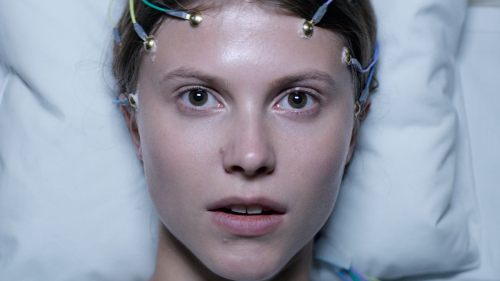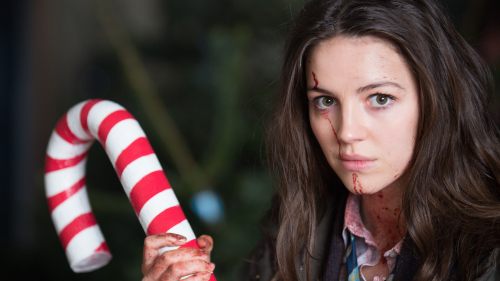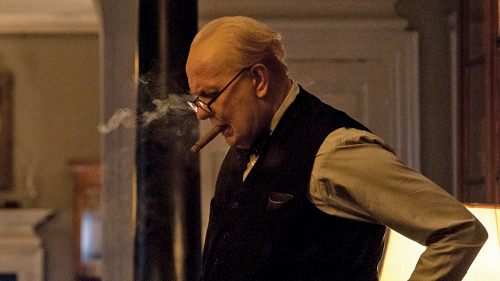Joachim Trier Talks THELMA And His Love For Genre Cinema
(Photo used courtesy of Wikimedia Commons.)
Joachim Trier (Louder Than Bombs, Oslo, August 31st) is one of our most fascinating directors - an artist who deals in isolation and austerity, while never losing sight of the human concerns contained within his aesthetic fascinations. His latest - the supernatural coming of age picture, Thelma - is a touching slice of queer cinema, offering up a protagonist (Elli Harboe's titular superpowered university student) who experiences a series of rather unusual awakenings, leading her to question the belief structure her parents passed down to her. It's the perfect companion piece to Julia Ducournau's Raw (which also rocked Fantastic Fest a year before Trier's film did the same), as both are distinctly European slices of genre cinema that're complex, affecting, and deeply humanistic.
We had a chance to talk with Trier, and what followed was a rather lively conversation regarding his genre influences, and his love of artistic collaboration...
Joachim Trier: Do you know [the publicist] Kate, who just put me on the phone with you right now?
BMD: I don’t know her personally, no. But she’s always been incredibly helpful in the past.
JT: We were just having this wonderful conversation about [Lucio] Fulci, and Lizard In a Woman’s Skin. And I understand that you personally write about horror movies a lot, correct?
BMD: I do! I was really excited for Fantastic Fest this year because I’d heard Thelma was going to be your take on the supernatural thriller. Being a huge fan of your work, that intrigued me.
JT: Oh, thank you so much. Yeah – I was nervous when the movie was selected to play at Fantastic Fest, because it’s my first attempt at a genre film, and you guys are the experts.
BMD: Well, I don’t know if we’re “experts”, but we certainly love some weird movies. Which brings me to my first question: why exactly did you want to make a genre picture? Your style doesn’t exactly fit into that box.
JT: I think it’s just because I’m a fan of it. It felt liberating to do something that didn’t have to abide by all the qualitative rules of a drama. But I think we also ended up adding a bunch of those elements to [Thelma] – a “sensitivity”, for lack of a better term. That became part of the fun of making it – the balancing act of finding the horrific, nightmarish images, with a character in the middle who I was still interested in on an existential level, like I was in my previous work. Trying to combine the two was the real fun.
BMD: So, you like Fulci. You like horror. The most obvious comparison when we watch Thelma is Brian De Palma’s Carrie. But I’ve also seen you mention in other interviews enjoying movies like [David Cronenberg’s] The Dead Zone. Can you elaborate on what qualities you look for in genre pictures?
JT: It’s a mixture of two things. First, there’s the allegorical element. If the horror or supernatural pieces of the film create specific emotional or character beats that you can pick up and identify with, that’s very strong. Take Rosemary’s Baby, for example – it was a film that emerged during a time of burgeoning feminism, and [Rosemary’s] husband and the other characters are controlling her. It’s an exaggeration of that subject, which had been plaguing many women’s lives at the time, and still does to this day. That’s really cool.
But then you have the potential of very visually driven cinema. If you look at any film from Dario Argento, you have several conceptual shots that are constructed out of pure passion to create an image that carries an emotion. So there, you’re right back to Hitchcock, who was constructing a huge crane just to make that swooping camera move toward the key in Notorious, or that Vertigo zoom that he used to generate a specific emotion. I think that’s what’s fun about genre movies. There’s a tradition of innovative visuals.
BMD: Now, was there a particular image that you had in mind that became the starting point? I love hearing visually driven artists like Brian De Palma talk about that initial spark.
JT: It’s always hard to recount, because there’s so many ideas at the beginning and they all get kind of jumbled around during the process. But I do remember latching onto this scene where she’s having an epileptic seizure in the university reading hall, and you have the birds behind her crashing into the windows. That was a very early idea.
We threw out a lot of ideas and threw out a lot of visual set pieces, and we really weren’t sure why or how they’d fit in the whole. We were trying to work intuitively through the process of screenwriting; myself and Eskil Vogt, whom I’ve worked on the last few movies with. While brainstorming, we spent a lot of time watching movies, listening to synthesizer music – Tangerine Dream, John Carpenter and the like – just getting into the vibe. We were like actors trying to get into a role, and it was just so exciting and so much fun.
BMD: And as you just mentioned, you’ve worked with [co-writer] Eskil Vogt on your last four films. What is it about your collaborations that keeps you two coming back to each other?
JT: Sometimes it just works, you know? It’s like any other relationship. You get comfortable with a person and find that the atmosphere you create together is just nice to be in. We’re film nerds. We watch a lot of movies together. I feel very free with him and can speak my mind. Neither one of us feel like we’re restricted by one another. We can have a conversation and it’ll last for weeks or months because we both keep thinking of something new to say. That then becomes a script. I don’t like working alone. I need collaboration. That’s important.
BMD: Your films often deal with characters in isolation. Do you think that you’re expressing a certain fear in continuing to explore that theme?
JT: You always come back to things that scare you, but it really isn’t a conscious decision. Motifs emerge in an artist’s work sometimes without them knowing it, but I’m always trying to do something new and different and just have fun while making these movies. Because it gets boring trying to do the same thing over and over, right?
BMD: What about Elli [Harboe]? Where did you find her and how was it to work with her? She’s just phenomenal in the lead role.
JT: Isn’t she? She’s gonna be a star. We were so lucky to get her. Even though she doesn’t have that much experience, she just has this very natural talent and knack for drama. She’s got the intuition of a trained actress who’s been doing this for years. But she was also very brave, taking on the physical demands of the role – working with snakes and being submerged in giant pools of water. She really drove that. I didn’t want to push her into situations that made her uncomfortable, because you’re always concerned for a young woman’s safety. But she really took the lead and pushed the scenes where she wanted them to go.
BMD: Which naturally comes across on screen, because there’s a real theme of empowerment within the movie. Can you speak to that briefly?
JT: I did a lot of research in very restrictive yet charismatic churches around Norway, and they seemed to have a very limited understanding of allowing people to love who they want to love. This made me very angry, and I wanted to make a movie about two girls falling in love. My anger at anyone trying to repress that drove me to make Thelma, because it’s ultimately a movie about acceptance – not only of being a lesbian, but also of these other elements that make her unique in a society that does not value uniqueness perhaps as it should.
Thelma is currently playing theatrically in NY/LA, and will be expanding to other markets in the coming weeks.



